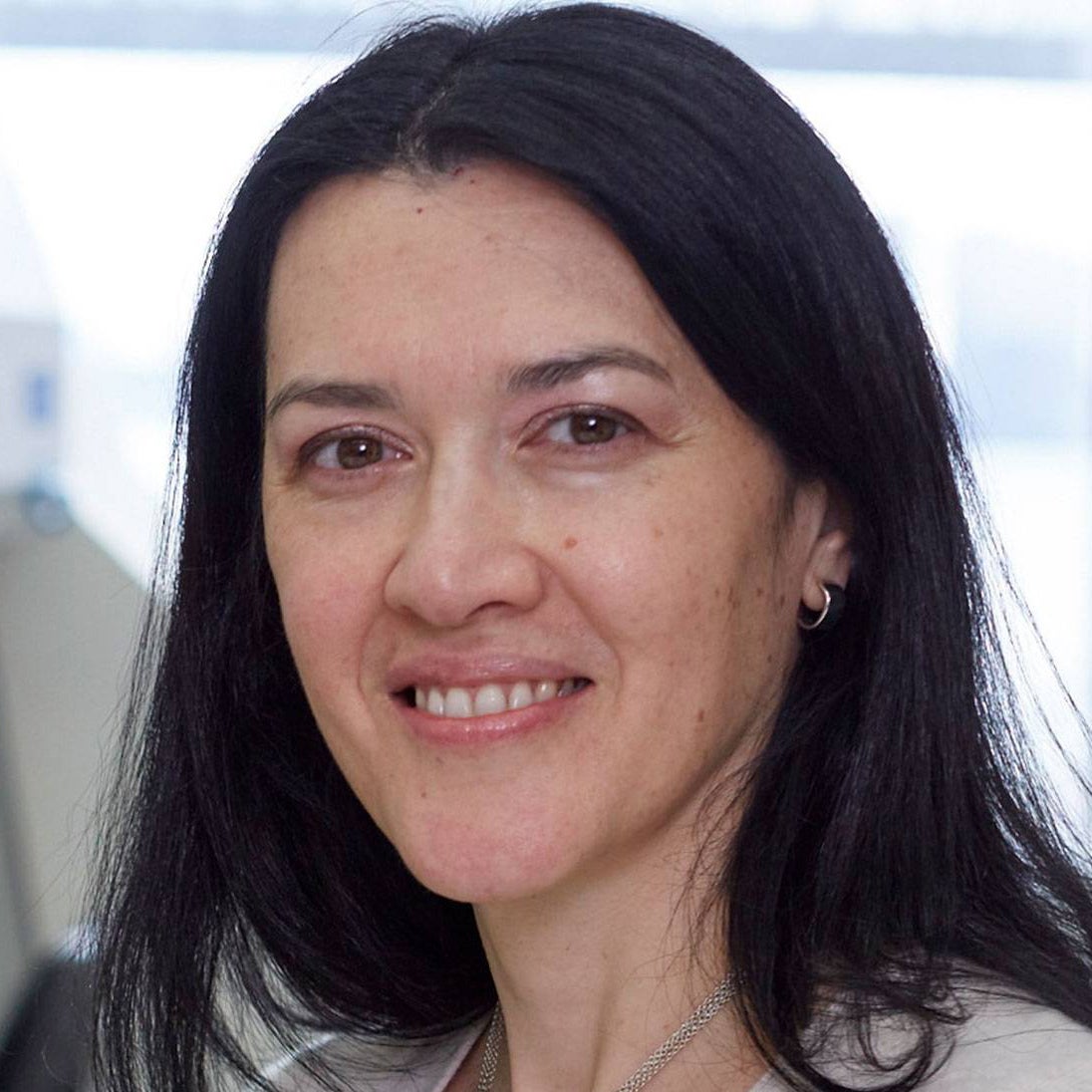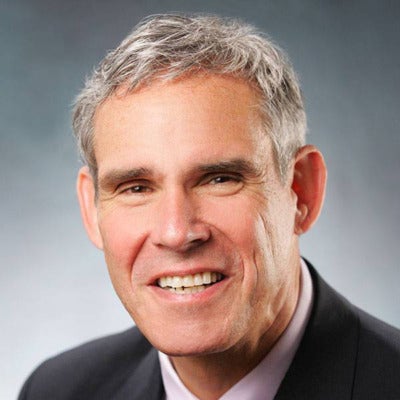Dec. 17th Event: The Latest on Omicron, Boosters, and Immunity
Kira Peikoff was the editor-in-chief of Leaps.org from 2017 to 2021. As a journalist, her work has appeared in The New York Times, Newsweek, Nautilus, Popular Mechanics, The New York Academy of Sciences, and other outlets. She is also the author of four suspense novels that explore controversial issues arising from scientific innovation: Living Proof, No Time to Die, Die Again Tomorrow, and Mother Knows Best. Peikoff holds a B.A. in Journalism from New York University and an M.S. in Bioethics from Columbia University. She lives in New Jersey with her husband and two young sons. Follow her on Twitter @KiraPeikoff.

The Omicron variant poses new uncertainty for the vaccines, which four leading experts will address during our virtual event on December 17th, 2021.
This virtual event will convene leading scientific and medical experts to discuss the most pressing questions around the new Omicron variant, including what we know so far about its ability to evade COVID-19 vaccines, the role of boosters in eliciting heightened immunity, and the science behind variants and vaccines. A public Q&A will follow the expert discussion.
EVENT INFORMATION:
Date: Friday Dec 17, 2021
2:00pm - 3:30pm EST

Dr. Céline Gounder, MD, ScM, is the CEO/President/Founder of Just Human Productions, a non-profit multimedia organization. She is also the host and producer of American Diagnosis, a podcast on health and social justice, and Epidemic, a podcast about infectious disease epidemics and pandemics. She served on the Biden-Harris Transition COVID-19 Advisory Board.
 Dr. Theodora Hatziioannou, Ph.D., is a Research Associate Professor in the Laboratory of Retrovirology at The Rockefeller University. Her research includes identifying plasma samples from recovered COVID-19 patients that contain antibodies capable of neutralizing the SARS-CoV-2 coronavirus.
Dr. Theodora Hatziioannou, Ph.D., is a Research Associate Professor in the Laboratory of Retrovirology at The Rockefeller University. Her research includes identifying plasma samples from recovered COVID-19 patients that contain antibodies capable of neutralizing the SARS-CoV-2 coronavirus.

Dr. Onyema Ogbuagu, MBBCh, is an Associate Professor at Yale School of Medicine and an infectious disease specialist who treats COVID-19 patients and leads Yale’s clinical studies around COVID-19. He ran Yale’s trial of the Pfizer/BioNTech vaccine.

Dr. Eric Topol, M.D., is a cardiologist, scientist, professor of molecular medicine, and the director and founder of Scripps Research Translational Institute. He has led clinical trials in over 40 countries with over 200,000 patients and pioneered the development of many routinely used medications.
This event is the fourth of a four-part series co-hosted by Leaps.org, the Aspen Institute Science & Society Program, and the Sabin–Aspen Vaccine Science & Policy Group, with generous support from the Gordon and Betty Moore Foundation and the Howard Hughes Medical Institute.

Kira Peikoff was the editor-in-chief of Leaps.org from 2017 to 2021. As a journalist, her work has appeared in The New York Times, Newsweek, Nautilus, Popular Mechanics, The New York Academy of Sciences, and other outlets. She is also the author of four suspense novels that explore controversial issues arising from scientific innovation: Living Proof, No Time to Die, Die Again Tomorrow, and Mother Knows Best. Peikoff holds a B.A. in Journalism from New York University and an M.S. in Bioethics from Columbia University. She lives in New Jersey with her husband and two young sons. Follow her on Twitter @KiraPeikoff.
The Secrets of a Long Life from the U.S.’s Top Longevity Hot Spot
Summit County resident Gloria Breigenzer, 75, does a yoga headstand in the Rocky Mountains while her horse looks on.
People are living longer in the world's richest countries, according to a recent Pew Report. Certain areas, in particular, have drawn the attention of researchers who study longevity because in those places, living to 100 is not unusual.
"If you want to live longer, shape your environment."
At 8000 feet up, Summit County, Colorado is a longevity hotspot. Surrounded by mountains that soar to more than 14,000 feet, the population of nearly 31,000 brags the highest expected lifespan in the United States, at 86.83 years. For comparison, the average life expectancy in the U.S. is 78.6 years.
So, what is it about living in Summit County that has brought about this high honor?
Despite popular belief, it's not about genes. Only about "20-30 percent of longevity can be predicted by genetics," longevity researcher Howard S. Friedman wrote in an email exchange. Friedman, a professor at the University of California at Riverside, co-authored a book about a famous study that followed participants for eight decades to learn what traits and factors contribute to a long life.
"About half is behavioral (including environmental)," Friedman says. "The rest is random (chance)." His longevity research is based on work that began in 1921 by Stanford University psychologist Lewis Terman. To discern the keys to longevity, Friedman and colleagues spent 20 years looking back at the lives led by the 1500 "gifted" 11-year old boys and girls who were born in 1910 and participated in Terman's study.
"We found that ambition, perseverance, and high motivation … predicted not only success but also longevity: Stressful job and hard work, long life!" Friedman says.
Longevity expert Dan Buettner agrees that an individual's environment is key. Buettner studies what he calls Blue Zones, where people "naturally live longer." But, unlike the five Blue Zones in the world -- Okinawa, Japan; Sardinia, Italy; Nicoya, Costa Rica; Ikaria, Greece; and Loma Linda, California — the majority of the Summit County population chose to move to the mountain towns that make up the region. Because Buettner believes that people can be taught to live longer, he sees Summit County as an instructive locale.
Like the Blue Zones, people in Summit County "do not pursue healthy lifestyles; [rather] it ensues," he says. "Blue Zones have the benefit of traditional patterns of eating and traditional rhythms of life. So they tend to be places where people walk to work, to a friend's house … [and] Blue Zone people eat the right food -- not because they have better individual responsibility or discipline; they simply live in an environment where beans, greens, nuts and grains are cheapest and most accessible."
"If you want to live longer," Buettner says, "shape your environment."
But an individual's environment can be affected by a number of factors, including socioeconomics, race, quality of and access to health care, as well as behavioral and metabolic risks. While the residents of Summit County smoke less and exercise more than those in regions with shorter life spans, they also have higher incomes and levels of education and lower unemployment.
"The healthiest individuals in The Longevity Project…lived meaningful, committed lives. They worked hard and played hard."
Gloria Breigenzer moved to Summit County 20 years ago with her husband. "We wanted to ski and ride horses up in the mountains," says Breigenzer. The 75-year-old still works part time as a hair dresser, goes to the gym every day, lifts weights and does yoga.
"I don't know why people don't want to get up and go out and work out and do stuff. I do," says the grandmother, who also exercises her rescue horse five days a week and for the past 15 years has done swing, country two step, and jazz dance in a group with her 77-year-old husband. She's also taking kiteboarding lessons and for the past two years has spent every afternoon studying Spanish.
Pete and Judy Rubin, both 65, retired to Summit County nearly two years ago from Cleveland. In Colorado, "socializing doesn't revolve around food," says Pete. "In Cleveland it always did…[Being outside] in summer or in winter is just easy. Skiing, on a bike, taking a hike, mowing the lawn, looking at a mountain instead of having someone else do it."
The Summit County approach resonates for researcher Friedman, who says that it's the "constellations of habits and patterns of living," that stood out most to him in his study. "Throw away your lists...The healthiest individuals in The Longevity Project…lived meaningful, committed lives. They worked hard and played hard. They were very persistent and responsible, and they were dedicated to things and people beyond themselves."
The following are some of the common denominators found in populations that live longer, including those who live in Summit County:
Plant-based diet: "Eat meat, no more than 5 times a month … [and] 95 percent of all the calories you take in should be whole plant-based foods," says Buettner.
Know your purpose: Buettner found that having and understanding your sense of purpose is worth up to seven years of extra life expectancy.
Have friendships: "You should have three to five friends who are healthy themselves who you can call on a bad day and they'll care," says Buettner.
Be on the move: Populations in zones where there is higher longevity "move naturally" as part of their day. It's not about diets. "No diet in the history of the world has worked for more than 5 percent of people after two years," says Buettner.
Relieve stress: "You should have some daily practices that help you downshift," says Buettner. It "could be taking naps, or meditation practice, or a habit of praying or a habit of doing happy hours."
Employ a family first rule: "Successful centenarians put their families first," explains Buettner. "And that means keeping your aging parents nearby, being seriously invested in your partner and if you have kids, you make them a priority."
It's these "key patterns of living [that] tend to make you both healthier and happier," says Friedman. "And health and happiness often then mutually reinforce each other."
Here's What It Looks Like to Seek Therapy for Climate Change Anxiety
Treatment for climate change anxiety looks different from treating generalized anxiety in that the concerns have a legitimate basis, therapists say.
Three months after Gretchen bought a house in Grass Valley, California, the most destructive and fatal wildfire in the state's history ravaged the towns about 40 miles northwest of her.
"For a long time, I kept on having this vision of what my town will look like if one of those firestorms happens, and I felt like I needed to work on that."
The Camp Fire of November 2018 was noteworthy not just because of its damaging scale but because of what started it all: a spark from a faulty transmission line owned by the Pacific Gas & Electric Company, which services nearly two-thirds of California.
PG&E reacted by announcing almost a year later that in advance of days with a high fire risk, it would proactively institute power outages in 17 counties throughout the northern part of the state, including the one where Gretchen lives. The binary options seemed to be: cause another fire or intermittently plunge tens of thousands of people into literal and figurative darkness, impacting emergency services, health, food, internet, gas, and any other electrified necessity or convenience of modern life.
This summer, in between the end of the Camp Fire and the beginning of the blackouts, Gretchen, who asked to keep her last name private, decided it was time to seek counseling for climate-related anxiety.
"That was a very traumatic experience to go through," Gretchen, 39, says, describing what it was like to have recently settled in this increasingly fire-prone part of her home state, and later witnessing a colleague flee California altogether after his own home burned down and he couldn't afford to stay. "For a long time, I kept on having this vision of what my town will look like if one of those firestorms happens, and I felt like I needed to work on that."
While research on climate anxiety—or, more broadly, the effects of climate change on mental health—has been slowly but surely piling up, the actual experience of diagnosing and treating it is less well-documented in both media and academia. An ongoing Yale University study of American perceptions of climate change shows an increasing proportion of concern: In 2018, 29 percent of 1,114 survey respondents said they were "very worried" about climate change, up from 16 percent in 2008. But there are no parallel large-scale studies of whether a similar proportion of people are in therapy for climate change-related mental health issues.
That might be because many would-be clients don't yet realize that this is a valid concern for which to seek out professional support. It could also be because there are no definitive or unifying resources for therapists who are counseling people on the topic. Climate anxiety is notably absent by name from the Diagnostic and Statistical Manual of Mental Disorders (DSM), the psychological gospel for everyone from clinicians to lawmakers. The manual was last updated in 2012 (and published in 2013), just when the first documents of climate anxiety were beginning to crop up.
A small 2013 study surveyed college students in the U.S. and Europe to try and answer the question: Is habitually worrying about the environment a mental health concern if it's a response to a real threat? The study concluded: "...those who habitually worry about the ecology are not only lacking in any psychopathology, but demonstrate a constructive and adaptive response to a serious problem." In other words, worrying about a concrete external concern like the state of the environment is on a different plane than habitually worrying about an internal concern, like feelings of inadequacy. Therapy may still help with the former, but the diagnostic framework could ultimately look different than what is typically used in generalized anxiety.
For now, the best resource for therapists counseling patients battling what is sometimes dubbed "ecoanxiety" is a 70-page booklet called "Mental Health and Our Changing Climate: Impacts, Implications, and Guidance," whose publication was co-sponsored by the American Psychological Association, which publishes the DSM. It's been through two editions already, the first in 2014 and the second in 2017.
"It's not clear to me that [climate anxiety] would merit its own diagnosis, at least at this point," says Susan Clayton, who was the lead author on the 2017 edition and who studies this area at The College of Wooster, but doesn't counsel people directly. However, she says, "I do think that there are some differences [from generalized anxiety], and one of the important differences is, of course, that there's some realism here."
Clayton says that group therapy may be a particularly useful way to affirm for people that they're not the only one experiencing climate anxiety, especially in communities where it might be taboo to not only affirm the existence of climate change but to be openly affected by it.
On drawing therapeutic inspiration from historical examples of other global dangers—such as the widespread fear of nuclear threat during the Cold War—Clayton says: "That was such a different time and they were thinking differently about mental health, but I think in many ways the fear is very similar. It's not like worrying about your finances, it's worrying about the end of the world. So that sort of existential component, and the fact that it's shared, both are very similar here."
There are precedents that therapists can refer to for guidance on helping clients managing climate anxiety, like the approaches used to support people dealing with a terminal illness or battling systemic racism. Such treatments need to stay rooted in the reality of the trigger.
"You don't want to say to them, 'That's not a real thing,'" Clayton explains. "So I think of [climate anxiety] like that. It does mean that the therapeutic focus is not going to be on trying to get people to be reasonable," which is to say that their anxiety is not inherently unreasonable.
"I think it is important to recognize that the anxieties have a legitimate basis," she adds.
"I feel more comfortable now being prepared, being prudent, but not dwelling on it all the time."
Gretchen's reality is now one of adapting to living an off-the-grid lifestyle that she didn't intentionally sign up for. She puts gas in her car in advance of blackouts, and waits to see week-by-week if the school where she teaches second and third grade, in the foothills of Tahoe National Park, will be closed. Her union has yet to figure out how this stop-and-go schedule will affect her salary; she has to keep rescheduling parent-teacher conferences; and she no longer knows when the last day of school will be—existing summer plans for her personal life be damned. Even her interview for this story was affected by this instability.
While trying to schedule a time to talk, she wrote, "Speaking of climate change, I may not have work the rest of the week due to PG&E power outages. If so I will have a very flexible schedule." Later, she suddenly had to decline. "As it turns out, the power's not going out. I will be at work."
In therapy sessions, she works with her counselor to focus on preparedness, where possible, and to specifically frame that preparedness as a source of regaining some of the stability she's lost rather than a sign of imminent trouble. That nuance became necessary after a training at work had the opposite effect.
"We've gone through scenarios [where] if a firestorm happens and we don't have time to evacuate, we have to gather all the children into the cafeteria and fend off the flames ourselves with help from the fire department, and keep them alive if we can't get out in time," she says. "After that day, or that training, that really scared me."
Her therapist uses a type of psychotherapy called eye movement desensitization and reprocessing (EMDR) to help Gretchen move away from traumatizing images, such as picturing her town on fire, while emphasizing what it is that she can control, such as making sure her car has a full tank, in case she needs to evacuate. EMDR has been shown to help people with post-traumatic stress disorder (PTSD) and the World Health Organization offers practice guidelines around it.
"I feel more comfortable now being prepared, being prudent, but not dwelling on it all the time," she says. "I feel a little less heightened anxiety and have stopped replaying [those images] in my mind."
Overall, the type of support Gretchen receives is based on pre-existing tools for managing other well-established mental health burdens like PTSD and generalized anxiety. Although no definitive, new practices have specifically emerged around climate anxiety on a comprehensive scale yet, Gretchen says she was nonetheless met with compassion when she first approached a therapist about the topical source of her anxiety, and doesn't feel that her care is lacking in any way.
"I don't know enough to know whether or how it should become its own diagnosis, but I feel like it's something that is still evolving. Down the road, as we see more populations having to move, more refugees, more real effects, that might change," she says. "For me, using the old tools in a new way has been effective at this point."
Gretchen hasn't yet explored with her therapist the more existential worries that climate change dredges up for her—worries about whether or not to have children, and if it was a mistake to settle down in Grass Valley. She's only been in therapy for her climate anxiety since the summer (although she has intermittently sought out professional mental health support for other reasons over the last eight years), and it will take time to get to these bigger issues, she says. She's not sure yet whether that part of her counseling will look different than what's she's done so far.
But she does wonder about the overall usefulness of pathologizing what, as Clayton said, are legitimate anxieties. She has the same question when it comes to providing mental health support for her students, many of whom live in poverty.
"Is it just putting a bandaid on something that is unfixable, or is unfair?" she ponders. But de-escalating the psychological toll that climate change can have on people is crucial to giving them back the energy to deal with the problem itself, not just their reaction to the problem. Clayton believes that engaging in climate activism can provide solace for the people who do have that energy.
"This is a social issue, and there's obviously lots and lots of climate activism," she says. "You might not be comfortable being politically active, but I think getting involved in some way, and addressing the issue, would help people feel much more empowered, and would help with the experience of climate anxiety."
"Remember that nature is not just a source of anxiety, it's also a source of replenishment and restoration."
As far as what shape this personal involvement takes, an increasingly vocal movement of people is calling for a refocus. They say the onus of reversing, or at least stymying, the situation should fall on the big businesses and governments that have been too slow to act, not on individual consumer actions, like buying sustainably made clothes, divesting from the meat and dairy industry, or driving an electric car.
But outside of formal therapy and even activism, however that looks, Clayton has another suggestion for combating climate anxiety, and it's one that is surprising in its simplicity: Go outside, and take stock of that which boldly continues to exist.
"People who are anxious about climate change, it's partly about the survival of the species, but it's partly about the sense that, 'Something I care about is being destroyed,'" she says. "Remember that nature is not just a source of anxiety, it's also a source of replenishment and restoration."

